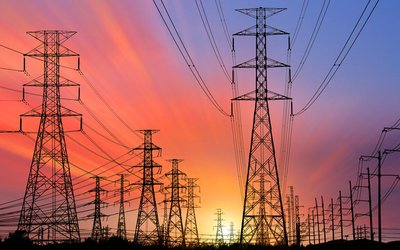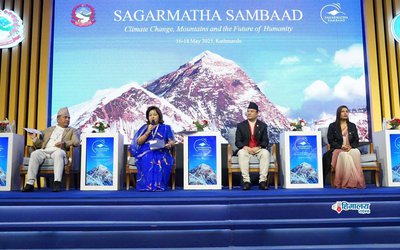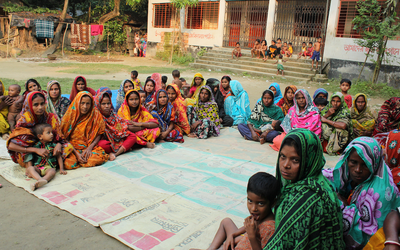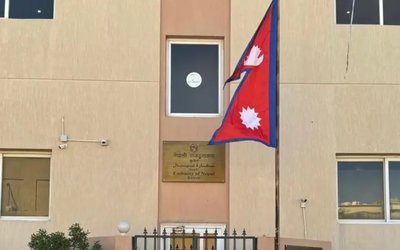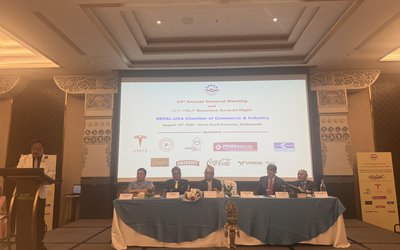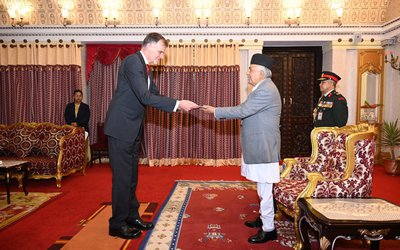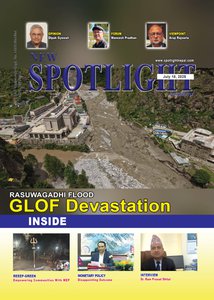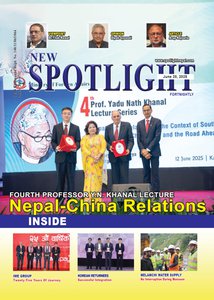Three decades of experience in enforcing environmental law in Nepal could not convince some of the politicians and the 'so-called' investors on the benefits of Environmental Impact Assessment (EIA) process. 'Chicken-hearted' investors consider EIA process a 'barrier' for project implementation,relating with approval of EIA and its associated reports. Investors are little concerned with the quality of such reports, considering that whatever they submit that should be approved. They advocate for sustainable development but forget the environment protection as one of the three pillars of sustainable development.
On 02 May 2025, the government policy and programme for 2025/26 stated to simplify the environmental study and assessment process. The policy and programme mentions to undertake airport construction and expansion only on the basis of economic, commercial, and environmental feasibility. This signifies the importance of the EIA process and EIA tool itself to make a project sustainable and environment-friendly.
On 29 May 2025, the Budget Speech informed to speed-up, simplify and facilitate the EIA process and make arrangement for the "approval of the Scoping Document and EIA Report at once" of the prescribed projects. Scoping is the first stage and the EIA report is the last stage of the EIA process to provide environmental clearance for project implementation. Hence, the approval issue as contained in the Speech is a ' flaw' technically, and this is against the national legal regime, national and international processes, and practiceson the environmental assessment process.
The Budget Speech stated to implement the development projects within the national parks and protected areas, and forest areas without negatively affecting the environment and biodiversity. It clearly indicates the government's intention to use parts of the national parks and protected areas for project implementation. It challengesthe national and international understanding on the EIA process and the parks.
Furthermore, the budget speech provisions to arrange for 'not to conduct Supplementary EIA' (SuEIA) after the approval of the EIA on the possible decline or increase of 10 percent of the trees before (tree) cutting as a part of site clearance. It also provisions to avoid re-counting and measurement of trees while issuing use right of the forest areas. The Budget Speech provisions to make arrangement to deposit only one percent allocated for land management and trees caring while utilising forest area for the development project. Regarding SuEIA, recounting and measurement of trees, and depositing only one percent can be simply understood government's intention to facilitate socio-economic and infrastructure development in forest areas.
Let us recall the technical aspect, principle- and legal provisions-based EIA process, and national & international practices, experiences and learning on the application of EIA process, in brief, to make the development environment-friendly and sustainable.
Step 1 Screening is conducted whether the proposal or project requires environmental assessment or not. If required, it informs the level of assessment required. In Nepal, Brief Environmental Study (BES) or Initial Environmental Examination (IEE) or EIA should be carried out for proposals as per Schedules 1, 2 or 3 of the Environment Protection Rules (EPR), 2020.
Step 2 Scoping is required to determine the 'scope of work' for any level of study. Scope of work is included in the Terms of Reference (ToR). Nepal requires to let the people know about the project by publishing a format-based 7-day public notice in a national newspaper and asks the people about the environmental issues. The proponent should prioritise issues from a list of identified and raised issuesthat must be considered during the environmental assessment. A format-based Scoping Document (SD) as per Schedule 5 of the EPR, 2020 is preparedand is submittedto the competent authority for approval.
Step 3 Terms of Reference (ToR) is prepared in the format of EPR Schedules by including priority issues, as contained in the SD, for the EIA study. Nepal's environmental law provisions to submit both SD and ToR at once for necessary approval. It clearly indicates the scoping a pre-requisite of the ToR to prioritise issues that streamlines EIA study. ToR is not approved without approving the SD technically and legally.
Step 4 After approval of the SD and ToR, EIA report preparation process starts. Once the EIA report is drafted as per the approved ToR and in the format contained in EPR Schedules, apublic hearing is organised by informing the multi-stakeholders and local people through a format-based public notice to collect suggestions and inputs on the draft report.A project-specific EIA report is finalised by including suggestions of the public hearing. Then the proponent collects a format-based recommendation letter from the concerned local levels and concerned subject-related offices.
The proponent submits the final EIA report to the government authority for necessary approval by including legally required documents such as proofs of public notice,public hearing, and recommendation letter(s) of the local level (where the project is planned for implementation) etc. The approving agency may review the EIA report internally and through a committee, make the report public for 7 days by publishing a notice in the national newspaper, and share through website as well, and approve it.After the approval of the EIA report, proponent can implement the project and should carry out self-monitoring. The government department(s) will be engaged in environmental monitoring, supervision, and auditing. Auditing marks the end of the EIA process. Hence, EIA process starts with screening and SD preparation and ends with environmental auditing.
Almost all countries have benefitted from the EIA process. I myself was engaged in internalising and institutionalising the EIA system in Nepal for about two decades, and building human resources.I offered my service as an international EIA trainer in 3 African countries in 2013, 2017 and 2018, including a French-speaking country.
Key question is: if the government does not see the benefits of the EIA process to make the development environment-friendly and sustainable, it can repeal all legal provisions on EIA process and 'degazette' the National Parksfor project(s) implementation.
Briefly, "approval of the Scoping Document and EIA Report at once" as contained in the Budget Speech is technically and legally incorrect. The government may wish to 'degazette' the National Parks to implement the projects by respecting the national and global value of such Parks. It is urged not to take 'shameful' initiatives on the EIA process and the National Parks to demoralise Nepal and Nepali conservation communities.

Batu Uprety
Former Joint-Secretary and Chief of Climate Change Management Division, Ministry of Environment (then), and former Team Leader, National Adaptation Plan (NAP) formulation process. E-mail: upretybk@gmail.com
- NDC3IP Formulation Process Launched
- Aug 10, 2025
- Understanding the Supplementary EIA
- Jul 27, 2025
- Two Calls For Climate Action From Kathmandu
- May 21, 2025
- Teaming up Climate Change Negotiation
- Apr 18, 2025
- Sagarmatha Sambad: Likely Bearing the Fruits
- Mar 27, 2025
